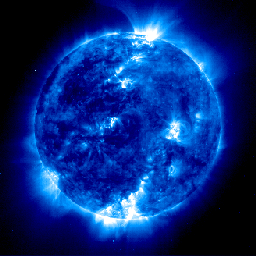

| Kp Index | Ap Index | Geomagnetic Field Conditions | HF Noise | Aurora |
| 0 | 0 - 2 | Very Quiet | S1 - S2 | None |
| 1 | 3 - 5 | Quiet | S1 - S2 | Very Low |
| 2 | 6 - 9 | Quiet | S1 - S2 | Very Low |
| 3 | 12 - 18 | Unsettled | S2 - S3 | Low |
| 4 | 22 - 32 | Active | S3 - S4 | Moderate |
| 5 | 39 - 56 | Minor Storm | S4 - S6 | High |
| 6 | 67 - 94 | Major Storm | S6 - S9 | Very High |
| 7 | 111 - 154 | SEVERE Storm | S9+ | Very High |
| 8 | 179 - 236 | SEVERE Storm | BLACKOUT | Extreme |
| 9 | 300 - 400 | EXTREMELY SEVERE | BLACKOUT | Extreme |
| Kp Index | Planetary K-Index, averaged over the past three hours and tends to be a measure of current conditions. |
| Ap Index | Planetary A-Index, 24-hour average and represents overall geomegnetic field conditions for the UTC day. |
| HF Noise | Approximate "S-Meter" noise level below 10Mhz. |
| Aurora | Approximate level of auroral activity. "High" conditions usually extends to Latitude 45 degrees "Very High" conditions usually extends to about Letitude 35 degrees |
SOLAR WIND averages 350-450 km/sec and density less than 10 p/cm^3
greater than 500 km/sec or high density can trigger geomagnetic activity.
SHOCK WAVE from a solar flare or Coronal Mass Ejection (CME) arrives at the Earth about 55 hours after the solar event.
| Flare Class | Type of Flare | HF Radio Effects | Resulting Geomagnetic Storm |
| A | Very Small | None | None |
| B | Small | None | None |
| C | Moderate | * Low Absorptons | * Active to Minor |
| M | Large | * High absorption | * Minor to Major |
| X | Extreme | * Possible Blackout | * Major to Severe |
| Sunspot Class | Description of the Active Region | Potential for Flare Activity |
| Alpha | Unorganized, unipolar magnetic fields | Little threat, but watched for growth. |
| Beta | Bipolar magnetic fields between sunspots | C class flares and posssible large M class. |
| Delta | Strong, compact bipolar fields between spots | High potential for M or X class major flare, Major Flare Alert issued. |
This was contributed by Paul Harden, NA5N
National Radio Astronomy Observatory
VLA/VLBA Radio
Telescopes
Socorro, New Mexico
Email Paul at [email protected]